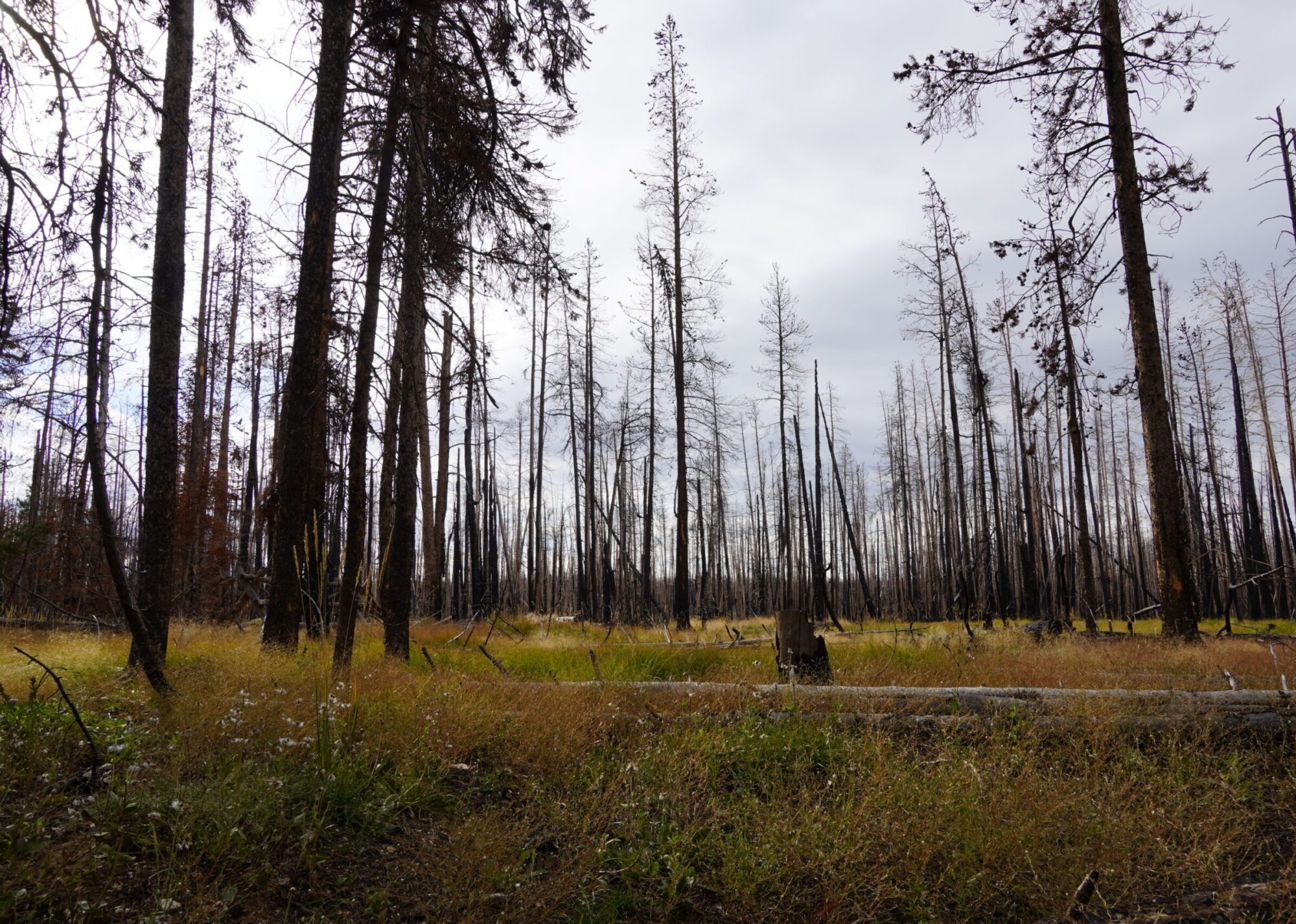Widespread mortality of pine trees following the bark-beetle epidemic can change the ways wildlife and people interact with these formerly intact forest habitats. Elk, for example, rely on intact conifer forests for thermal refuge and escape from predation (e.g., natural predators and human hunters), but as beetle-killed trees fall, the subsequent changes to canopy cover and understory structure can alter forage abundance, thermal cover, and locomotive costs for elk. Behavioral responses of elk to changes in forest structure may, in turn, shift how people hunt them, affecting the way we manage this highly valued species and their habitats.
This project sought to understand how elk and hunters behave in a forest with intense beetle kill. This project wrapped up in 2020.
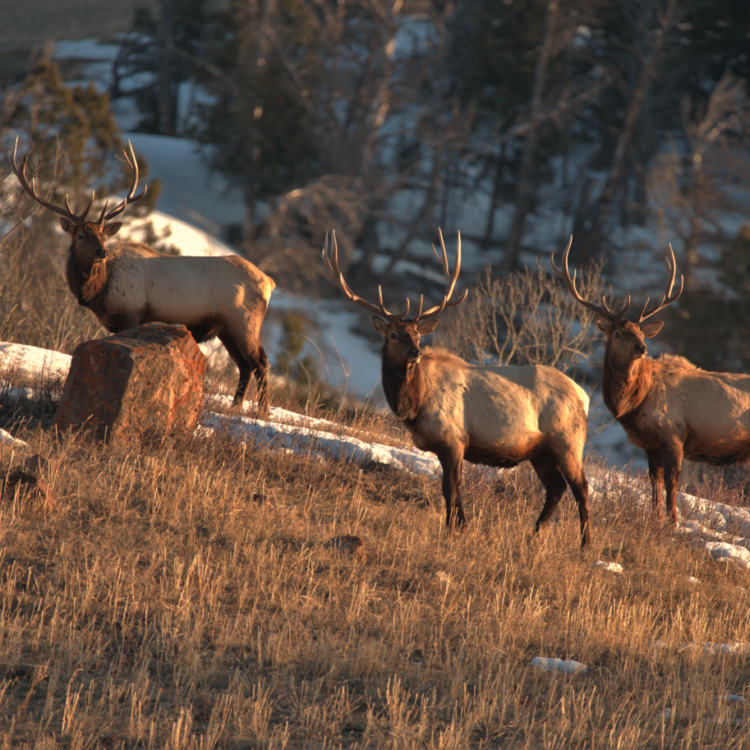
Main findings
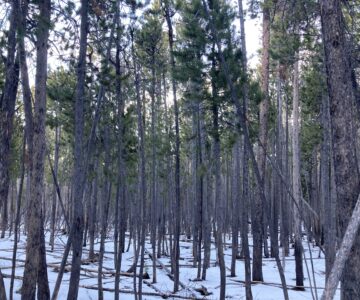
Bark beetles have changed how elk use the landscape.
When a bark beetle infestation sweeps through a forest, the dead trees often fall to the forest floor. This opens up the canopy and, because there is more space and sunlight, increases the opportunity for understory plants to grow. Although this increase in food might be attractive to an elk, any animal who wants to get to that food has to work a lot harder to navigate through all of the downed logs.
By following 47 elk with GPS collars, we found that bark beetles shape how elk use the landscape. Elk avoided going into parts of the forest with beetle kill, and instead chose to spend their time in intact conifer forests and grassy meadows. Even though the beetle-killed forests provided more opportunity for food, elk likely did not want to spend the extra energy that was required to navigate through the downed logs.
This finding indicates that habitat treatments that remove the downed logs or other obstacles could benefit elk by making otherwise inaccessible patches of food accessible again.
This research was published in the article “Multi-scale habitat selection of elk in response to beetle-killed forest” by Bryan Lamont, Kevin L. Monteith, Jerod A. Merkle, Tony W. Mong, Shannon E. Albeke, Matthew M. Hayes, and Matthew J. Kauffman in the Journal of Wildlife Management in 2019.
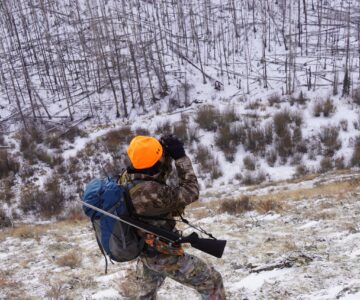
Bark beetle damaged forests do not change elk hunting.
Anyone who has tried to hunt elk know that elk use the landscape to their advantage: they might move to private land or dense forest to seek refuge from hunters. Since beetle-killed forests are so challenging to move through, especially quietly and without detection, elk might use these sections of forest as refuge during the hunting season.
Using GPS location from 50 female elk and 374 hunters, we found that elk do not use beetle-killed areas as refuge during the hunting season. Although elk moved beetle-killed areas during the hunting season, both archery and rifle hunters followed them into these hard-to-navigate areas.
This work suggest that, even though bark beetles might change forest structure and how elk use the landscape, this change in the forest does not prevent elk hunting, and the potential to use harvest as a management tool for elk.
This research was published in the article “Bark beetle-affected forests provide elk only a marginal refuge from hunters” by Bryan Lamont, Matthew J. Kauffman, Jerod A. Merkle, Tony W. Mong, Matthew M. Hays, and Kevin L. Monteith in the Journal of Wildlife Management in 2020.
Project lead
Bryan Lamont
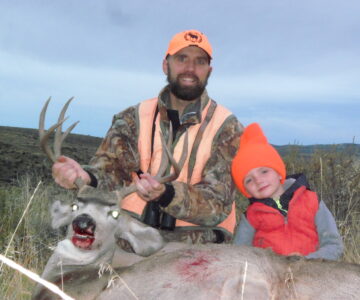
Collaborators, partners, and funders
This project was supported by the Wyoming Game and Fish Department, Medicine Bow-Routt National Forest Advisory Council, Rocky Mountain Elk Foundation, Wyoming Governor’s Big Game License Coalition, with additional contributions from the Saratoga, Encampment, Rawlins, and Little Snake River Conservation Districts.

